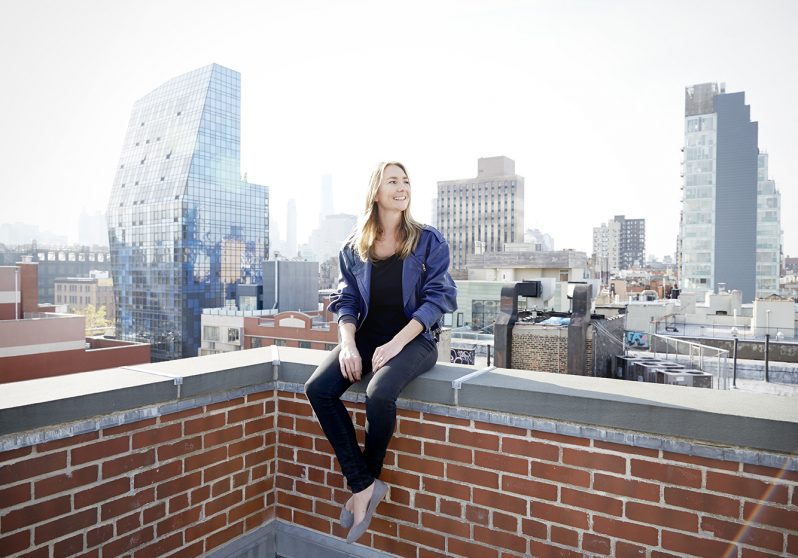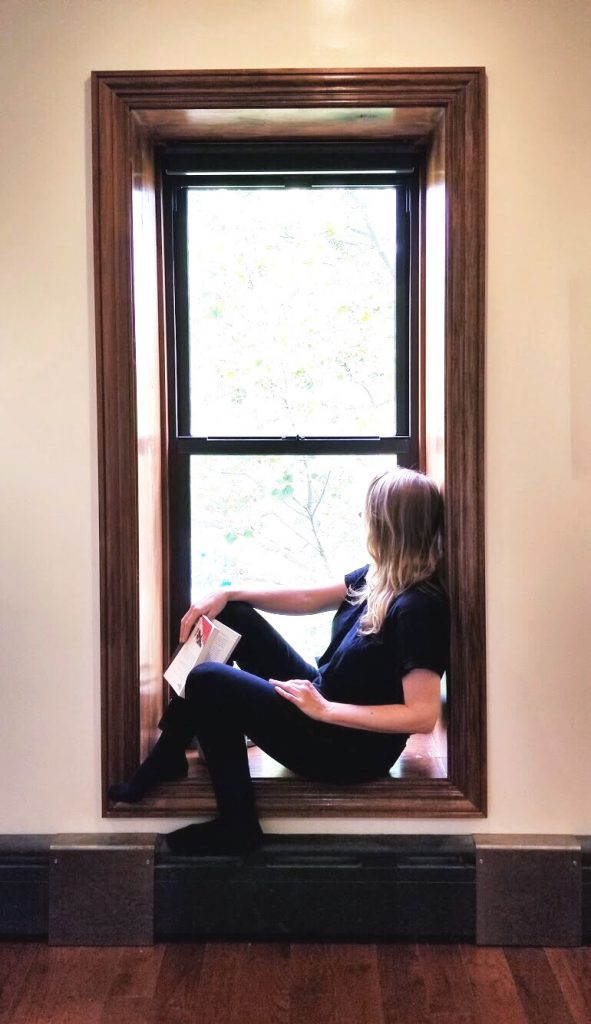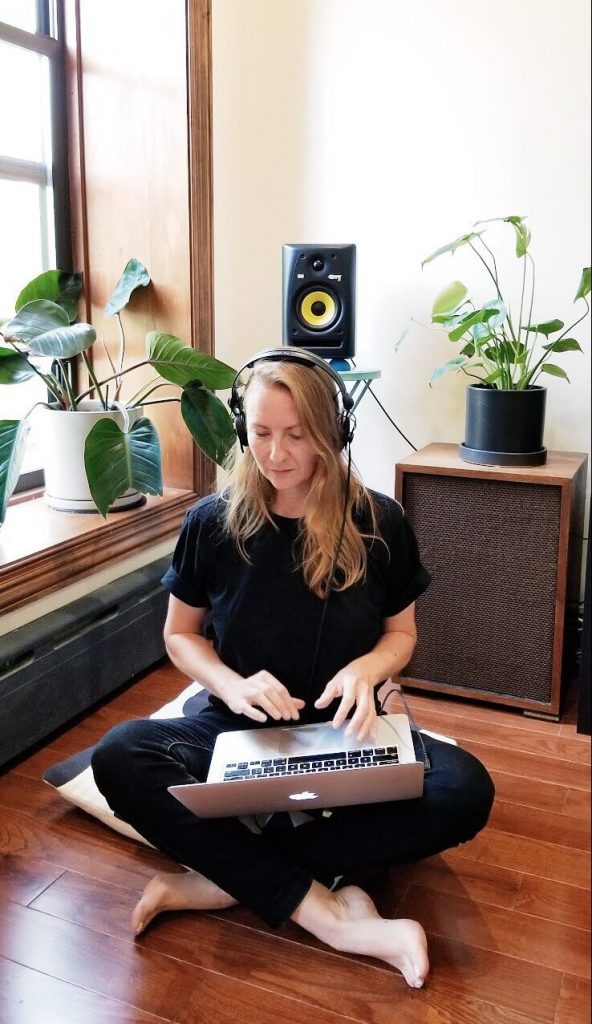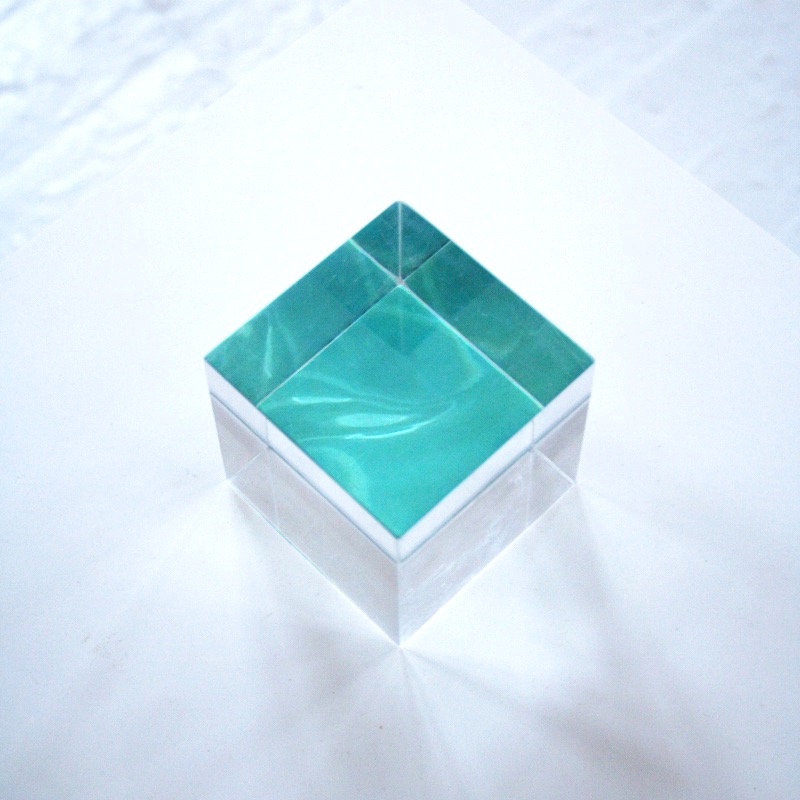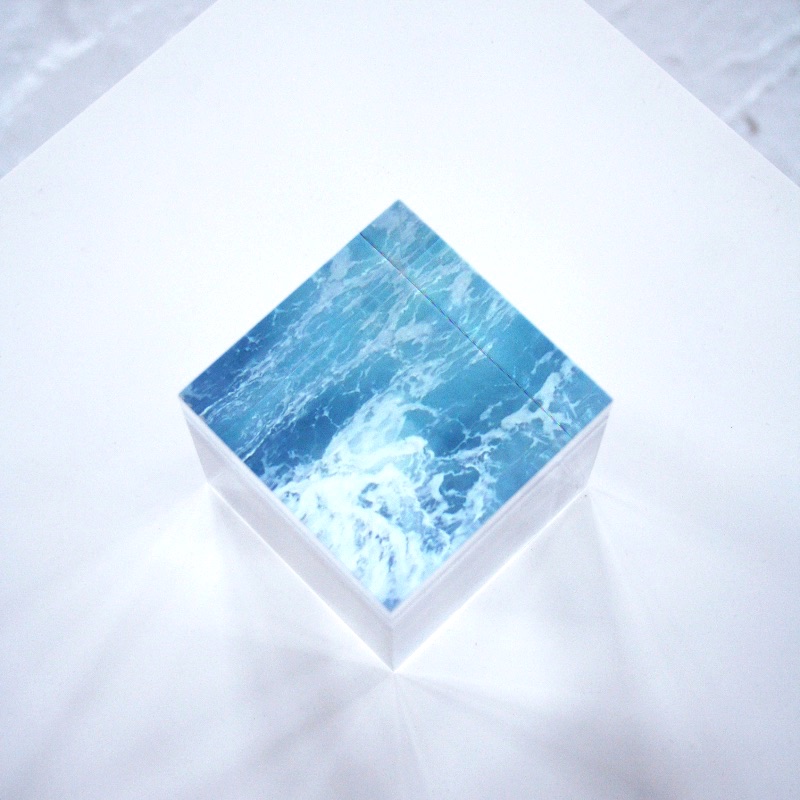Vancouver Biennale artists and curators live all over the world, spanning 6 continents. Today we share insights from Australian artist Kristin McIver. Her text-based work This Beautiful Day was a public favourite in Squamish, north of Vancouver, where it was installed as part of the Vancouver Biennale Artist Residency at Quest University in Squamish. Now living in New York, Kristin gives us her perspective on this era of COVID-19 and a look at a new public art project she’s currently part of in Times Square.
| Editors Note: Most of this interview happened in early May before the death of George Floyd and the recent growth of Black Lives Matter protests across the United States. We followed up with Kristin this week as she has attended many of the recent protests in Brooklyn, and we’ll explore further public art and Black Lives Matter in our next newsletter:
What has been happening in Brooklyn surrounding Black Lives Matter these last few weeks?
It has been inspiring to witness people of all colors, races, ages, genders and economic profiles united in mostly peaceful protests in Brooklyn and around the city, marching side by side against police brutality and systemic injustices which have unfairly prejudiced people of color in this country.
Unfortunately this solidarity was clouded by small groups of agitators and opportunists taking advantage of the situation, expressing their rage through violence and organized looting. While this unrest potentially undermines the message of Black Lives Matter, it simply represents another symptom of anger at centuries of living under a system designed to oppress communities and entrench wealth disparity.
It is that most humbling image of this past week of thousands kneeling together – rather than the unrest – that will become the lasting legacy of the Black Lives Matter movement and hopefully serve as the catalyst for reform – not just in the US but across the globe. |
|
Interview in Early May:
How have you spent your time during the pandemic? I can’t go to my studio as the building is closed, so I am taking advantage of the downtime to focus on research, reading and concept development. I am also using the time to edit some videos for an upcoming exhibition in New York, which was scheduled for April but has been postponed until businesses reopen again. The videos were shot during a recent residency at UniArte in Curaçao, an island in the southern Caribbean Sea.
Is this experience shaping your art practice in any way? It is impossible for this crisis not to impact one’s art practice, both in terms of how an artist approaches the work, and also how works are interpreted by viewers. The world is likely to never be the same again once we emerge from this, so ideas forming now will have impact for years to come. My work is about global and environmental concerns, data and digital connectedness. This situation has plunged people worldwide into a reliance on digital systems in order to maintain some sense of the world we are accustomed to. We are experiencing the world virtually like never before, so I have already been thinking about some ideas around this.What are you reading?I am re-reading Roland Barthes’ Elements of Semiology. Given the nuance of language in this age of “fake news,” semiotics takes on a new form. Words are no longer reliable signifiers, and digital culture, enhanced by COVID-19, further breaks down truths to a degree whereby one is no longer certain of any one reality. |
|
|
What are you watching?
I recently watched The Great Hack, an important film of 2019 that exposes the workings behind the Facebook / Cambridge Analytica scandal. It exposes how social media and big data are being used to shape global perceptions and win elections due to its highly targeted algorithms. The spread of misinformation and “fake news” has rendered knowledge unreliable, resulting in a post-truth society where the source of information is questionable.
Music you’re listening to?
My husband is a DJ, so because we are both in quarantine together, I am listening to a lot of impromptu DJ sets. Sometimes we find ourselves dancing around the living room! |
|
Ideas, links, projects, or news you’d like to share?
I have a 3-part solo exhibition titled Impressions, which will traverse New York, Melbourne and Los Angeles, using the elements of water, fire and earth respectively to highlight climate change and the manipulation of data to shape policy and stall progress. The first chapter, to be held at Jane Lombard Gallery in New York, will present a series of video sculptures, projections and sound installations using water, data and algorithms as a device to comment on climate change, and the spread of misinformation at a time when social media is a primary source of knowledge for many.
| Photos of video sculptures in McIver’s upcoming Impressions exhibition. Courtesy of the artist.
|
|
Art to Light Up the Empty Streets of Times Square
|
|
|
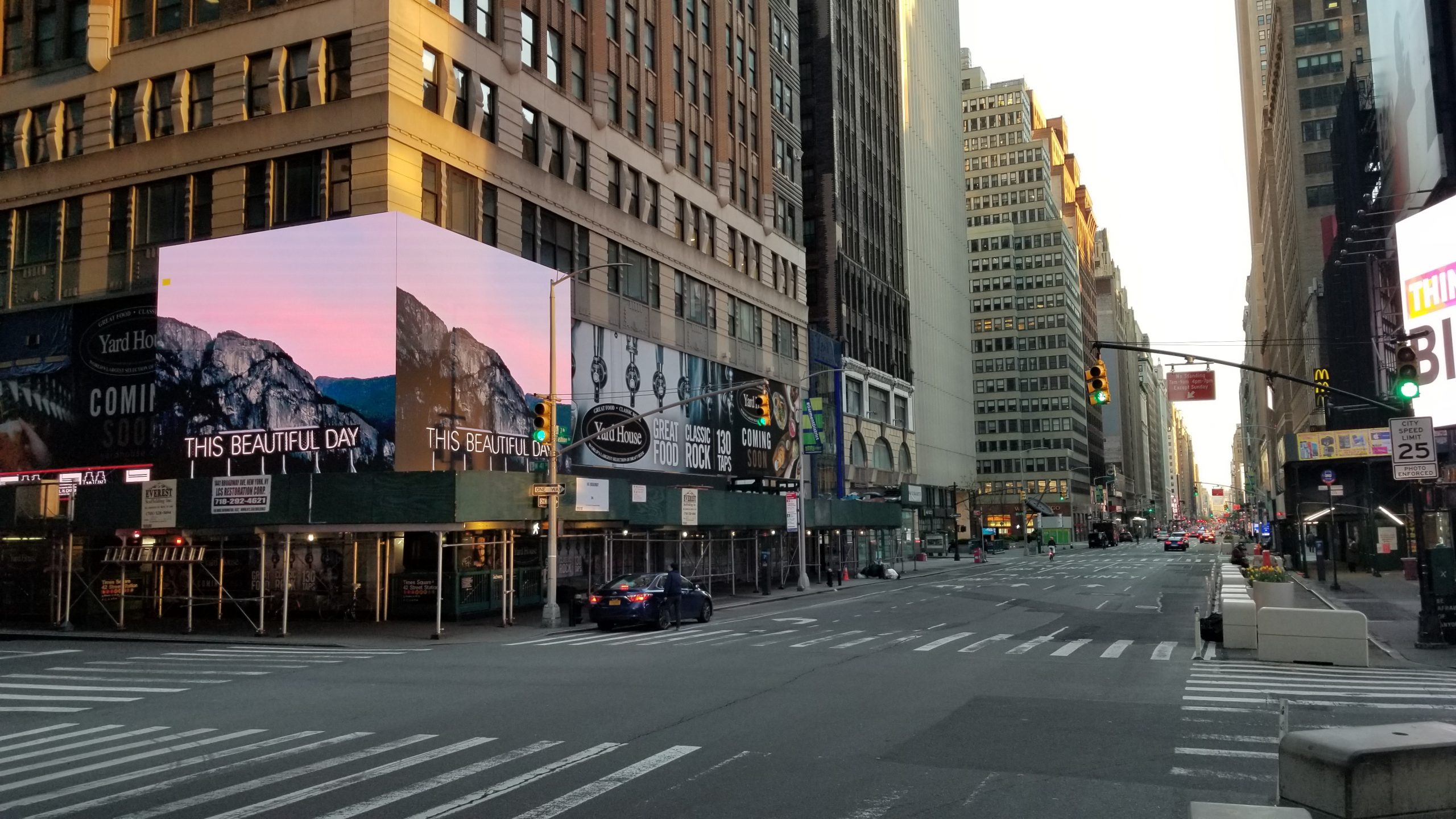
| View of Kristin McIver’s artwork that was part of Alone Together, displayed nightly in
May and June in Times Square.
|
|
|
Kristin McIver shares details of her most recent public art project. Where ads usually gaze down upon thousands of commuters below, artworks now light up the streets.
“Some of my text-based works have been re-contextualized in a rarely empty Times Square. The presentation forms part of the Alone Together exhibition by ZAZ10TS, an art gallery cultural initiative engaging the public with art in Times Square. The show features artists from New York and around the world. Some of my works created over the past 10 years now appear in the centre of Times Square, on a giant billboard surrounded by advertising and commercial messages.
Within this unique context – physical, social, political and historical – the artworks take on a new meaning from their original intent. Phrases such as “This Beautiful Day”, “Are You Still There”, “How Are You Feeling”, “What’s Going On”, “You And Me And You And Me” immediately refer to the current climate, when the viewer encounters them within the empty metropolis.”
The exhibition, which runs 7-8 pm nightly, gives special thanks to the essential workers on the frontline of the #Covid19 crisis and provides inspiring messages to passersby in the centre of Manhattan.
New York has been hit particularly hard by this pandemic, so in a beautiful act of solidarity people around the entire city “clap and cheer” together out the windows of their apartments where they are quarantined, at 7 pm every night. At the same time, buildings around the city, including the Empire State Building, illuminate in blue lights in honour of the essential workers. This exhibition joined this united sentiment which offers gratitude, respect and acknowledgement to those brave workers risking their lives each day to keep the city running.”
Alone Together
presented by ZAZ10TS
10 Times Square, Corner 41st Street and 7th Avenue
New York City |
|
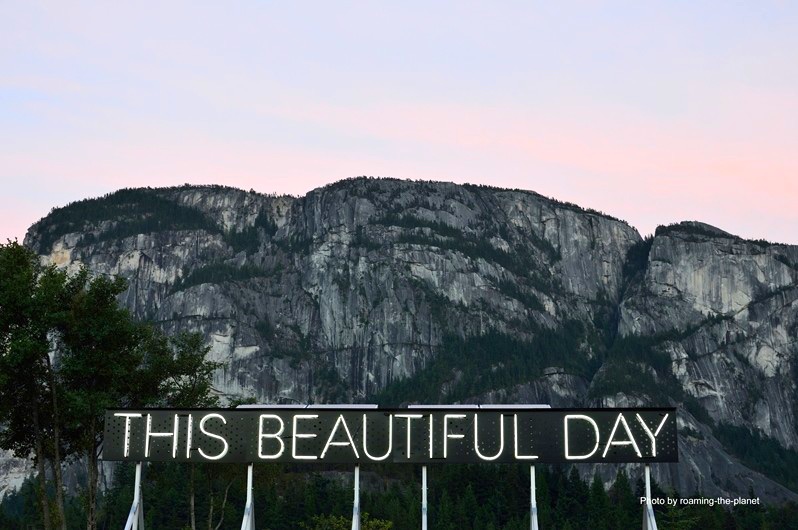
This Beautiful Day, Kristin McIver, 2015-2020 Vancouver Biennale installation in Squamish, BC, Canada.
What are your thoughts about This Beautiful Day during its rural installation in Squamish and now in this new context of Times Square?
This Beautiful Day was conceived during my time with the First Nations community in Squamish, north of Vancouver, where I was struck by the humility, humanity, and respect for the gift of nature that escapes much of the urban community. The phrase is a reminder that we are simply a part of a bigger ecosystem, and that every ray of sun, snowflake, butterfly, and breath of wind is something to be thankful for.
When re-contextualized within the urban centre of Times Square – especially during a viral pandemic (a natural mechanism within the same ecosystem) – this message serves as a counterpoint to the commercial messaging and reminds us of what lies beyond the walls of concrete. Time has slowed down. This busy metropolis now serves as a place of reflection, stillness and gratitude.

